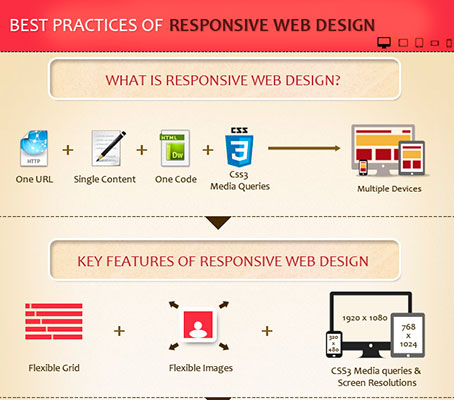Discover The Fundamentals Of Receptive Website Design To Make Sure A Smooth Individual Experience Across Different Screen Sizes And Gadgets
Discover The Fundamentals Of Receptive Website Design To Make Sure A Smooth Individual Experience Across Different Screen Sizes And Gadgets
Blog Article
Write- simply click the up coming site -Rees Murdock
If you want your site to work well on all gadgets, learn the fundamentals of receptive web design. Guarantee your website looks great on any type of screen size. Maintain mobile individuals happy and engaged. Increase your site's presence on internet search engine. Google favors mobile-friendly sites. Use fluid grids, adaptable images, and media inquiries. Make sure your content is accessible on all devices. Evaluate your website on different displays for the best individual experience. Understanding these principles is critical for effective responsive style. Find out even more regarding enhancing your site's functionality with receptive design strategies.
Importance of Receptive Website Design
Comprehending the significance of receptive web design is necessary in today's electronic landscape. Your site requires to be accessible and straightforward throughout numerous devices, consisting of desktops, laptops, tablets, and smartphones. With the increasing use of mobile devices for web browsing, having a responsive style is no longer simply a nice-to-have function but a need.
When your site is responsive, it adjusts seamlessly to various screen sizes and resolutions, supplying an optimum watching experience for your site visitors. This adaptability ensures that your web content continues to be legible, images are effectively displayed, and navigation is user-friendly despite the tool being utilized. By catering to the demands of mobile customers, you can enhance user satisfaction, boost involvement, and inevitably drive conversions.
In today's affordable on-line setting, having a responsive website can additionally positively impact your online search engine positions. Search engines like Google prioritize mobile-friendly websites, so by embracing receptive layout, you not only enhance the customer experience however also increase your visibility and get to online.
Key Principles of Responsive Layout
To properly execute receptive style on your internet site, concentrate on understanding the crucial concepts that govern its flexibility across various devices. One fundamental concept is fluid grids, which entails using family member devices like percents instead of fixed systems like pixels for layout style. This enables elements to resize proportionally based on the screen dimension.
An additional key principle is versatile pictures and media, where pictures and video clips are sized in such a way that gets used to the container they're in, ensuring they maintain their percentages on various gadgets.
In addition, media queries play a crucial role in receptive layout by allowing you to apply different designs based on the device's characteristics, such as display size. It's vital to focus on content and functionality to ensure that customers can access one of the most crucial details no matter the gadget they're making use of.
Implementing Responsive Design Techniques
Begin by integrating receptive layout techniques into your web site to enhance its performance throughout various devices. One reliable technique is using liquid grids that enable components to resize proportionally based on screen size. This makes sure a consistent design and user experience.
One more critical technique is employing flexible pictures that can adapt to different screen sizes without losing quality or damaging the layout. By establishing max-width: 100% in CSS, pictures will certainly scale suitably.
Additionally, use media inquiries to use different designs based upon the gadget's features, such as display size or positioning. This aids customize the layout for details tools or screen dimensions.
Applying a mobile-first method, where you prioritize developing for mobile phones prior to desktop computers, can additionally enhance responsiveness.
Evaluating your internet site on different devices and screen sizes is essential to ensure that the design reacts well across the board. By integrating these responsive layout techniques, you can develop a website that delivers an optimal user experience no matter the device being used.
Conclusion
Since you understand the basics of receptive web design, you can guarantee your site looks fantastic on any device. Keep in mind, responsive layout resembles a chameleon, adjusting effortlessly to its environments.
By focusing on essential principles and carrying out strategies, you can produce an user-friendly and aesthetically enticing website that involves your audience properly.
Maintain practicing and improving your skills to stay in advance in the ever-evolving world of website design.
